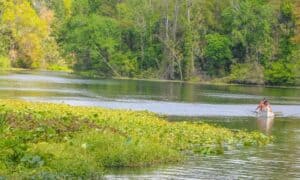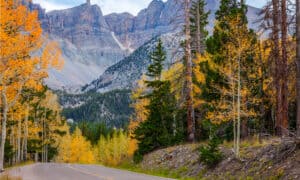The southern state of Tennessee is home to some of the most scenic national parks in the country. These parks showcase vast mountain ranges and expanses of wilderness not found anywhere else. They are home to many plant and animal species native to Tennessee and offer year-round opportunities for exploring. Let’s take a look at some of the best national parks in Tennessee!
1. Great Smoky Mountains

Featuring several historical remnants of Appalachian culture, the Great Smoky Mountains are gorgeous.
©Mihai_Andritoiu/Shutterstock.com
| Great Smoky Mountains | |
|---|---|
| Size | 522,427 acres |
| Animal to see | Black bear |
| Attraction to see | Clingman’s Dome |
Straddling the border of North Carolina and Tennessee are the Great Smoky Mountains. It’s the most visited national park in the country and features several historical remnants of Appalachian culture. Visitors can see a diverse range of plant and animal life, including black bears, hawks, and mountain lions. Nearby Gatlinburg offers plenty of tourist attractions as well, including Dollywood and the Titanic Museum.
The highest point in the park is Clingman’s Dome, which provides some of the best views of the mountains. According to the Environmental Management journal, wild boars in the park have been growing at a rapid rate.
2. Stones River National Battlefield

Scattered across the battlefield of the Stones River National Battlefield are historical canons from the original battle.
©Jeffrey M. Frank/Shutterstock.com
| Stones River National Battlefield | |
|---|---|
| Size | 709.49 acres |
| Animal to see | Red trailed hawk |
| Attraction to see | Stones River National Cemetery |
Stones River National Battlefield, the sight of the bloodiest battle in the Civil War, can be found in Murfreesboro, Tennessee. The battle started on the final day of 1862 and marked essential gains for the Union. Today, the site offers a visitor center that features a 9-minute film on the history of Stones River. Scattered across the battlefield are historical canons from the original battle. The national park is less than an hour from Nashville. You can expect to find a number of wildlife, including rabbits, hawks, and tree frogs.
3. Cumberland Gap National Historical Park
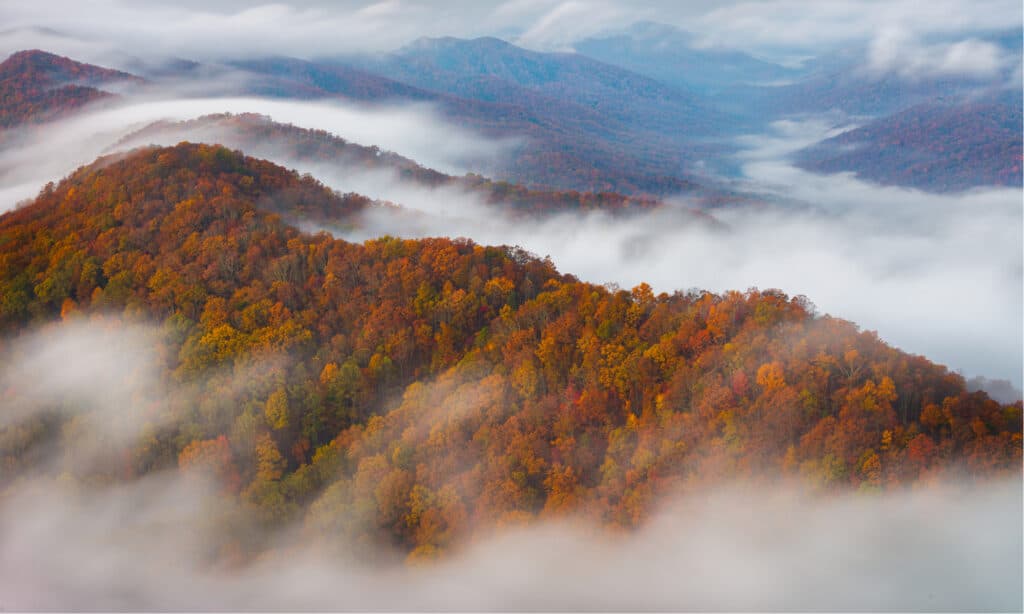
The vast wilderness of the mountains showcases the awe of the Wild West in Cumberland Gap National Historical Park.
©anthony heflin/Shutterstock.com
| Cumberland Gap National Historical Park | |
|---|---|
| Size | 24,000 acres |
| Animal to see | Coyote |
| Attraction to see | Little Congress Bicycle Museum |
The Cumberland Gap National Historical Park expands over parts of Tennessee, Kentucky, and Virginia. The vast wilderness of the mountains showcases the awe of the Wild West. Guests can walk miles of trails once walked by pioneers, ancient Native Americans, and buffalo. The mountains offer some of the best scenic views in the south and are home to coyotes, rabbits, raccoons, and dozens of other wildlife.
4. Big South Fork National River and Recreation Area

Covering more than 100,000 acres of the Cumberland Plateau, Big South Fork offers guided hiking, guided horseback trail riding, and guided river services.
©Patrick Jennings/Shutterstock.com
| Big South Fork National River and Recreation Area | |
|---|---|
| Size | 125,310 acres |
| Animal to see | White tailed deer |
| Attraction to see | Twin Arches |
The Big South Fork stretches from Tennessee to Kentucky and encompasses the land around the Big South Fork of the Cumberland River. It covers more than 100,000 acres of the Cumberland Plateau and offers several recreational activities for visitors. There are miles of trails to explore, with sandstone bluffs and gorges sights. Big South Fork offers guided hiking, guided horseback trail riding, and guided river services. The area is full of whitetail deer, black bears, and bobcats.
5. Appalachian Trail
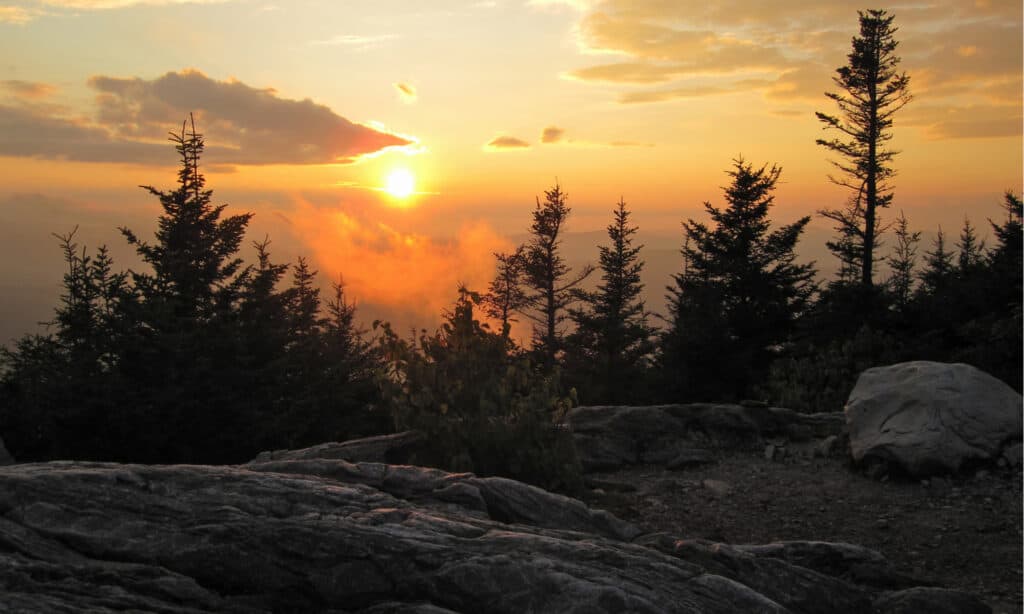
Stretching over 2000 miles, the Appalachian Trail is famous for a number of reasons.
©drewthehobbit/Shutterstock.com
| Appalachian Trail | |
|---|---|
| Size | 2,200 miles |
| Animal to see | Milk Snake |
| Attraction to see | Appalachian Caverns |
The Appalachian Trail stretches for over two thousand miles and through fourteen states, from Maine to Georgia. The footpaths through the mountains were first started in 1921 by private citizens and were finally completed in 1937. Thousands of volunteers and multiple state agencies work together to keep this national park up and running. Trails are teeming with wildlife, especially snakes like cottonmouths and milk snakes, field mice, and deer. The Tennessee section has plenty of scenic wonders to find, such as the Appalachian Caverns and Charlies Bunion.
You can read about how long it takes to hike the Appalachian Trail.
6. Andrew Johnson Historic Site
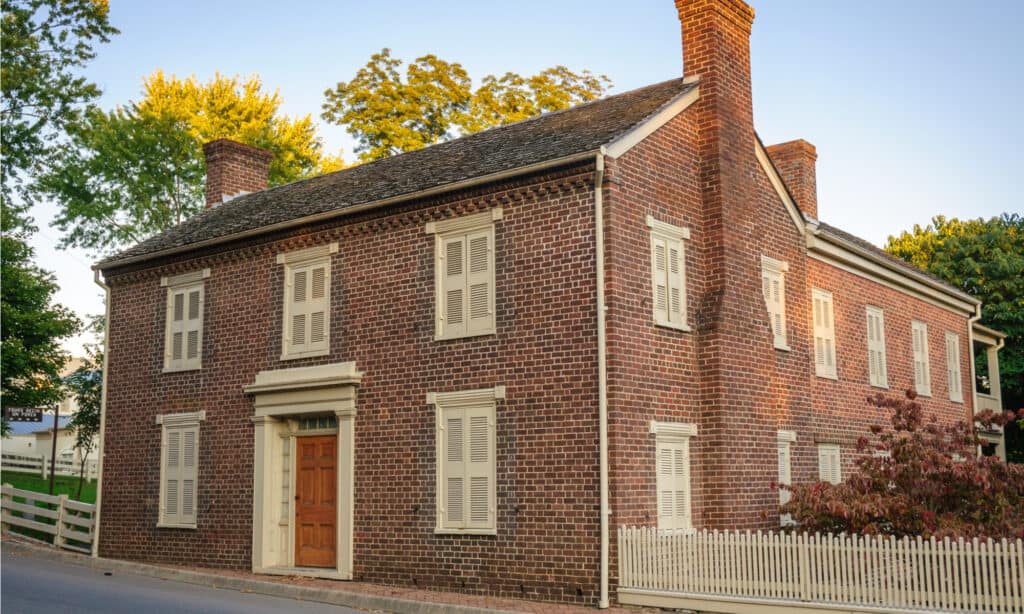
Established to preserve the history of President Andrew Johnson, you can find the Andrew Johnson Historic Site in Tennessee.
©Zack Frank/Shutterstock.com
| Andrew Johnson Historic Site | |
|---|---|
| Size | 16 acres |
| Animal to see | Field mice |
| Attraction to see | Andrew Johnson Homestead |
In Greenville, Tennessee is the Andrew Johnson Historic Site. This National Park was established to preserve the history of President Andrew Johnson. Johnson served from 1865 to 1869 and played a vital role in the reconstruction that followed the American Civil War. Visitors can take a trip through history at the Johnson Homestead and Cemetery. This sixteen-acre park is one of the smallest national parks found in Tennessee. You are likely to run into field mice, snakes, or deer on your trip.
7. Chickamauga and Chattanooga Military Park
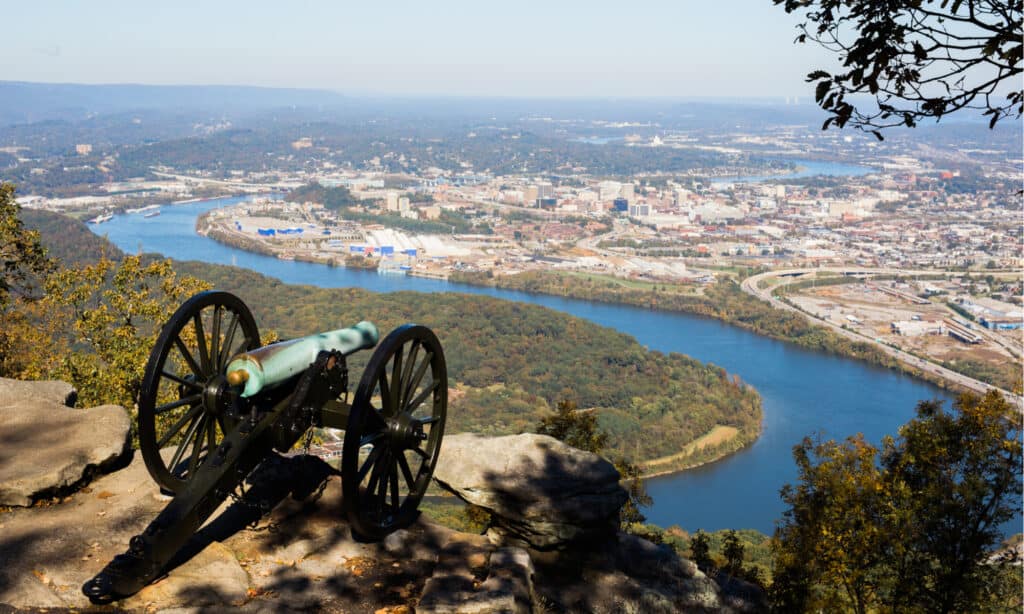
The battle between the Union and Confederacy was in 1863, and the Confederates had control of Chickamauga by September.
©Karen Culp/Shutterstock.com
| Chickamauga and Chattanooga Military Park | |
|---|---|
| Size | 9,523 acres |
| Animal to see | Red-bellied woodpecker |
| Attraction to see | Rock City |
Chickamauga and Chattanooga Military Park run through parts of Tennessee and Georgia. It’s the first and largest military park established in the country. The battle between the Union and Confederacy was in 1863, and the Confederates had control of Chickamauga by September. By November, the Union had seized Chattanooga. The city was seen as the “Gateway to the Deep South” and a significant victory for the Union. The military park is scattered with historical monuments, statues, and canons from the original battle. When strolling through the trails, you can hear a number of birds, like woodpeckers and hawks.
8. Fort Donelson
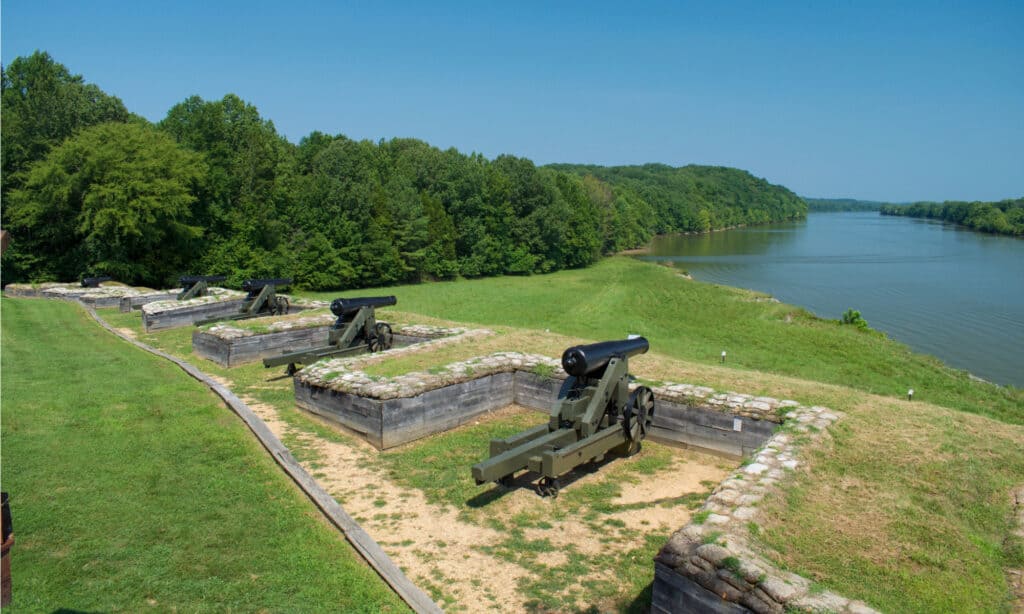
The Confederate surrender at Fort Donelson was accepted at the Dover Hotel, which guests can still visit today.
©garciatrails/Shutterstock.com
| Fort Donelson | |
|---|---|
| Size | 1,319 acres |
| Animal to see | Fox squirrel |
| Attraction to see | Dover Hotel |
Another famous battlefield found in Tennessee is Fort Donelson. The Union victory at Fort Donelson is credited with allowing them to take Clarksville and Nashville. The Confederate surrender at Fort Donelson was accepted at the Dover Hotel, which guests can still visit today. Fort Donelson is alongside the Cumberland River and contains several Confederate monuments. The National Park is over a thousand acres in size and reaches parts of Kentucky. Bison and elk no longer roam the area like they once did, but you can still expect to encounter squirrels, bald eagles, and butterflies.
9. Natchez Trace Parkway

Foxes, coyotes, and armadillos are commonly found in Natchez Trace Parkway.
©Joseph Sohm/Shutterstock.com
| Natchez Trace Parkway | |
|---|---|
| Size | 444 miles |
| Animal to see | Armadillo |
| Attraction to see | Natchez Trace Cycle Tours |
Over 400 miles of recreational road winds through parts of Tennessee, Mississippi, and Alabama. It follows the historical route called “Old Natchez Trace,” which many original settlers traveled down. While the scenic drive is the main feature of the Natchez Trace, there are also places to enjoy hiking, horseback riding, biking, and camping. Foxes, coyotes, and armadillos are commonly found in the Trace. At the same time, black bears are less common.
10. Obed National Wild and Scenic River Visitor Center

Hunting and fishing are allowed in Obed according to seasons and regulations.
©Kannan Sundaram/Shutterstock.com
| Obed National Wild and Scenic River Visitor Center | |
|---|---|
| Size | 5,000 acres |
| Animal to see | Bobcat |
| Attraction to see | Ozone Falls |
The Obed Wild and Scenic River in Wartburg, Tennessee once played a vital role in the lives of early settlers. It was a significant spot for fishing and hunting, and today visitors can enjoy a number of river recreation. There are trails for hiking, a primitive campground, and bluffs for experienced rock climbers. Hunting and fishing are allowed in Obed according to seasons and regulations. The National Park has also been designated as an International Dark Sky Park. Several wildlife call this area home, including wild boars, bobcats, and woodchucks.
The photo featured at the top of this post is © Kannan Sundaram/Shutterstock.com
Thank you for reading! Have some feedback for us? Contact the AZ Animals editorial team.




